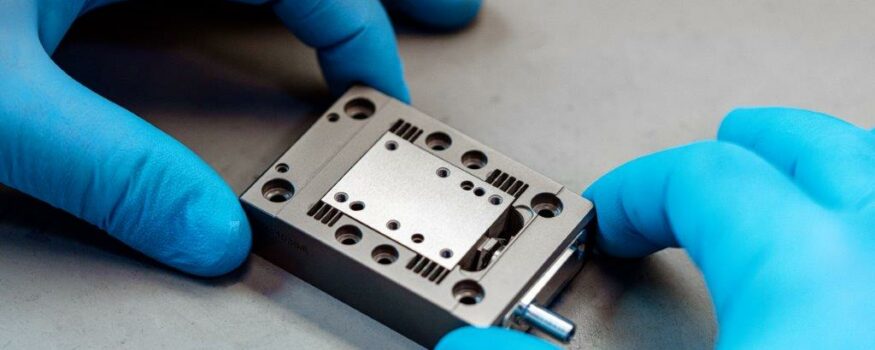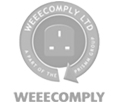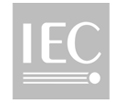Resonant frequency and nanopositioning
Posted in Nanopositioning Mar 24th 2023

How resonant frequency defines nanopositioning stage performance
It’s commonly believed that if you know the resonant frequency of a nanopositioning stage, then you’ll have an accurate indication of its performance, especially its dynamic performance. In simple terms, a higher resonant frequency is taken to equate with faster movement of each stage axis. Unfortunately, like many things in life, it’s rarely that simple!
In practice, resonant frequency is determined by several factors. These will all affect the performance of the stage, and therefore need to be considered equally before the correct selection of a nanopositioning system can be made. These factors include:
- The materials that are used to construct the stage, as material stiffness and density will affect resonant frequency. A low density material has a higher resonant frequency as its moving mass is low; however, if you add a load then the resonant frequency will drop quickly. By comparison, a stage with high stiffness, even if it is manufactured from a heavy material, will maintain its resonant frequency much better.
- The load applied to the nanopositioning stage, which defines the loaded resonant frequency and is normally specified as the first resonance for each axis
- The control and feedback electronics, which are crucial for controlling factors such as the effect of first and second resonance on the dynamic position of each stage axis
- The overall system, including the stage with all its mounting accessories or flexures, and the device to which the stage is mounted, as each component may have a different resonant frequency.
The design of nanopositioning stages
From the brief list above it will be clear why simply considering the resonant frequency of each axis fails to provide an accurate picture of the performance of the nanopositioning system. It also explains why, in many instances, it is essential to customise each system to meet the specific requirements of individual applications.
- For example, the materials of construction and design of the stage must be chosen to match the appropriate resonant frequency characteristics for each application. A key factor in this calculation will be the applied load. This is why we often focus on loaded performance on many of our datasheets as this criterion better reflects the practical use of the stage. In general terms, the greater the load acting on the stage the lower the resonant frequency of the stage will become. Our high stage stiffness means resonant frequency changes less with load change and therefore any dynamic tuning is less sensitive to load change.
Digital control
Advanced digital control of each nanopositioning stage is crucial. In particular, it allows the performance characteristics of the system to be precisely tuned for speed, resolution and payload, while eliminating any unwanted resonant frequency effects.
We achieve this using a combination of customised software algorithms and notch filters; the latter allow us to attenuate signals within a narrowly defined band of frequencies. We can therefore minimise the effects of frequencies that occur close to the resonant frequency, effectively reducing the impact that first and second frequencies have on dynamic positioning.
We also have a tool-box of algorithm modules to optimise stage performance. Velocity and acceleration control algorithms allow our stages to be driven at much higher operational bandwidths than devices that rely solely on position control. Although the latter uses a PID to control position, it cannot provide sufficient accuracy for control of high speed motion. In a situation where control within a move is required for producing accurate waveforms or ramps, the greater control is required. Trajectory control allows each stage axis to move rapidly to an exact position of within a few nanometres, without causing the stage to resonate. With these control methods a bandwidth of greater than 50% of the resonant frequency is possible, compared with just around 10% with a classic PID control.
Additionally, we have recently introduced a resonance detection system on many of our nanopositioning stages, which protects each system from potential damage by shutting it down immediately a stage axis begins to resonate.
Making the right choice
Our electronic nanopositioning controllers are designed to match the exact characteristics of our different stage mechanisms and actuators, to ensure the highest standards of accuracy, repeatability and reliability. The multi-channel NPC-D-6000, for example, is capable of controlling up to three piezo actuators and two- or three-axis nanopositioning devices, with picometre levels of positioning resolution. Alternatively, our NPC-D-5200 series of closed loop controllers for piezo actuators are ideal for optimising the performance of high-speed stages, with each controller automatically calculating up to 120,000 positional readings from the stage every second.
Selecting the best combination of nanopositioning stage and control technology for your particular application is not always straightforward. As we have indicted above, there are different factors that need to be considered, of which resonant frequency is just one; hysteresis, settling time, slew and non-linearity are among others that need to be considered. Together, they can all affect the performance, resolution and repeatability of each stage – and thus the quality of the scientific work for which the microscope unit is being used.
This is why it is important to choose a system that has been developed specifically for your application and to partner with a manufacturer that has the knowledge, experience and resources to guide you towards the best choice.
Prior Scientific has been involved in precision engineering for over 100 years, with over 40 years’ experience in Queensgate Nanopositioning (1978). We have the research, manufacturing capabilities and the products – both standard and custom engineered – to offer you the widest possible range of options, and then to provide you and your team with dedicated technical and commercial support.
Discuss your application needs
Contact our technical sales team to learn more












